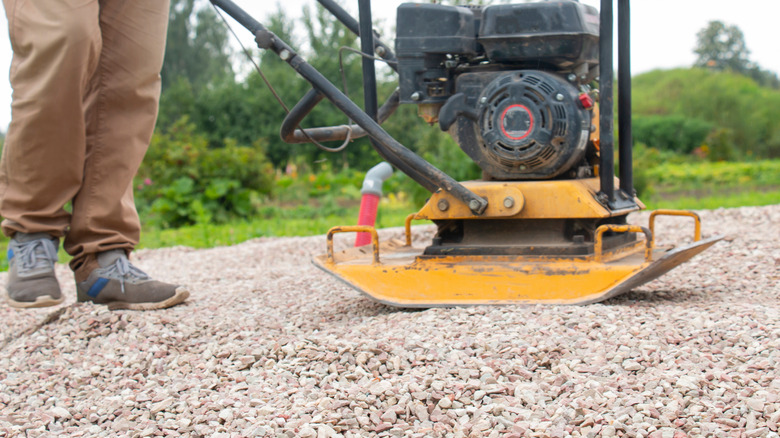How To Choose The Best Base Material For Your Gravel Driveway
Gravel driveways look great leading to many different styles of homes, from the rustic to the contemporary. They are also among the more affordable choices and are relatively easy to install. However, while you're considering the types of gravel that are best for your driveway, it's vital you also think about the material for the sub-base.
Laying landscape fabric is one of several useful tricks to prevent weeds from growing in your gravel, and it is often all you need for pathways and other areas of the yard, but on its own, it won't last long under vehicle traffic. You need something durable and stable that drains properly. A poor choice of base material is one of the main reasons gravel driveways develop potholes, tire ruts, and areas where rainwater pools.
A crushed aggregate called MOT Type 1 is probably the most popular material, often made from recycled rubble and concrete. The particles are all different sizes, so it compacts very well, providing a solid support layer for the gravel on top. Water doesn't penetrate as easily as it might with natural stone like limestone or granite, but being more uniform, those don't achieve the same compaction. So, how do you choose the best base material for your gravel driveway? While you can't go far wrong with MOT Type 1, it's important to understand the soil you have before making a final decision. So let's look into that in more detail.
How soil affects the base material for your gravel driveway
The last thing you want is for your gravel driveway base to break up and sink into the soil, but in some cases, that's exactly what could happen. Proper attention to this aspect can be the difference between a gravel driveway that lasts 60 years and one where a simple way to prevent potholes is never enough, and instead, it requires regular attention.
Rocky and sandy soils are fine because they usually have underlying stability and decent drainage. Soils with a lot of silt in them can be problematic because they retain water, which can freeze in winter, causing the base to buckle and break up. Clay is similar in that it expands when wet but shrinks when dry. Add poor drainage, and it can be particularly challenging.
In each case, you'll need to remove a sufficient amount of soil to allow a solid sub-base to be created. Heavy-duty geotextiles can be used as a barrier, or geocells might be used to hold the base material in place. At this point, you could complete the base with MOT Type 1, and it would probably be okay. However, for advice on choosing the best base material for a gravel driveway in your particular area, a better idea would be to talk to local quarries, building material suppliers, or landscaping suppliers. Discuss your location in detail, and they should be able to give you a precise solution, plus a quote and delivery schedule.

